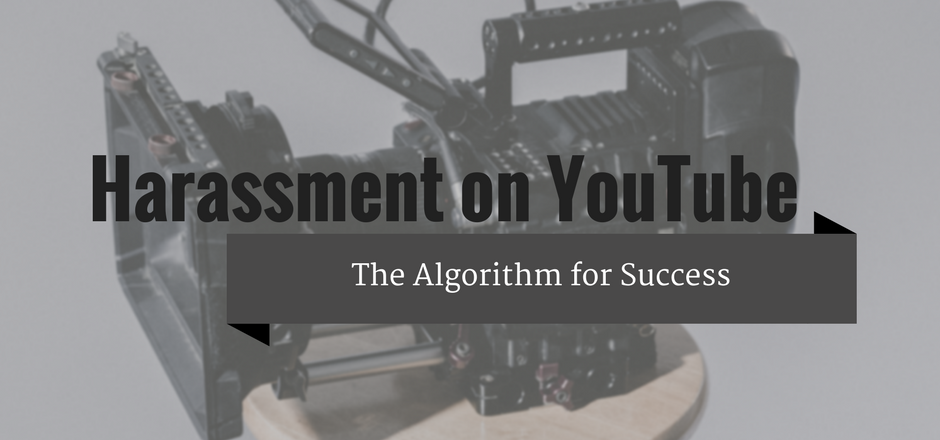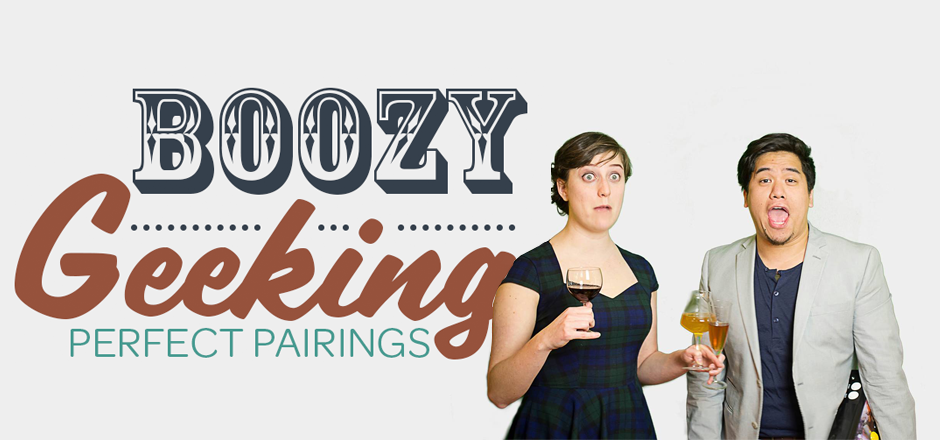Francina Simone says branding is everything when it comes to achieving YouTube success. Though BookTubers of color often face race-based harassment, Francina hasn’t experienced less success in BookTube compared to her White colleagues. She’s been making BookTube videos on her channel for less than a year, and her popularity has doubled compared to many people who’ve been making videos longer than her.
“Those with a clear brand have an easier time gaining subscribers. Gaining views actually has… everything to do with how you tag your videos and your knowledge of SEO. YouTube is a math platform,” Francina said. “The longer you do it and the better you are at the math… the more popular you are.”
Ana’s experience with her gaming channel, 8 Bites, supports Francina’s claim. “I believe [being a minority] does not lower my chances to get views since YouTube is based on algorithms (like views or view time) that are set in general,” Ana said.
This YouTube algorithm, which helps drive the success of some videos over others, backs up Francina and Ana’s points. About 85 percent of a video’s success in terms of view count comes from its watch time – this takes into account factors such as upload frequency, view duration, and how often people begin their YouTube viewership with the video. Because YouTube doesn’t make this algorithm public, it’s not only up to the YouTuber to conquer it, but also to understand it in the first place.
Raul of Latin Lector has also noticed how much numbers play a role in YouTube success.
“It’s sad to say, but I do believe [success] has a lot to do with subscriber count,” Raul said. “There are people of color who put out great and consistent content who lack the viewers, while I have seen some who haven’t made videos in months and still have thousands of more subscribers than they do.”
Ana also says that even though being part of a minority group can lead to prejudiced harassment from some people, it can also lead to an increase in views and popularity – a belief that other minority YouTubers hold.
Francina and Marisa have both noticed success in terms of how being a POC has benefited them in terms of visual branding. For Francina, it has made her name more identifiable while for Marisa, being biracial allowed her to share a more multicultural perspective on the online magazine AprilMag.
“That video [about being biracial] put me on the map for many people who might not otherwise have found my channel,” Marisa said. “Because there is a huge emphasis on supporting diverse channels and authors right now on BookTube, I have recently been featured on other creators’ channels as a diverse creator who talks about diversity and as such have gained a substantial number of subscribers.”
A 2017 study conducted by Peter Hegarty, a psychology professor at the University of Surrey, found that people are less likely to recognize Whiteness as a common trait amongst White people compared to non-Whiteness in people of color. The experiment involved presenting participants with a group of White actors and a group of Black actors and asked them to identify the common traits shared between each group. About 90 percent of people were able to quickly recognize that Halle Berry, Morgan Freeman, and Eddie Murphy were all Black. However, only about 25 percent of participants could identify Colin Firth, Kate Winslet, and Jim Carey as all being White in under 20 minutes.
The study suggests that because people see Whiteness as the norm, they don’t really recognize its presence unlike the more immediate recognition of Blackness. This could be the reason why being Black has helped Francina in her visual branding; her race distinguishes her from White BookTubers, helping her garner more exposure for her content.
And while Marisa isn’t Black, being biracial still helps her in a similar way: she’s able to offer unique viewpoints about race that White people can’t, which also gives a wider range of exposure.
Roses also recognizes that being a woman living with mental illness can actually help draw people to her content despite other drawbacks.
“I’ve… had people say to me, ‘Women are underrepresented in this field, I watch you because I want to support you and other women,’” said Roses. “Some people feel that my experiences bring something new to the table and that has…been a reason why some people have watched my content… Some people watch me because they connect with what I am saying [about mental illness], so there are different reasons for the ‘success’ of my work.”
A study carried out by the charity Time to Change found that prejudice against people with mental health issues leaves 64 percent feeling isolated, 61 percent feeling worthless, and 60 percent feeling ashamed. Despite mental illness being a subject that Roses has received insulting comments about, talking about her struggles on an accessible platform like YouTube provides other people living with mental illness a sense of community they wouldn’t have had before.
In Roxanne’s experience, White cisgendered BookTubers garner success and views more quickly and easily than other groups. Despite this, she also recognizes that her skin color is one that is widely accepted by in U.S. society, as evidenced by celebrities like Jennifer Lopez and Sofia Vergara.
Roses and Roxanne have both created communities where people with similar identities and issues can talk about their struggles in a safe environment, which may have contributed to their YouTube success. Race and mental illness can certainly lead to issues like harassment, but it’s important to remember that Youtubers can also foster positive communities and cultures from these issues.
“Who knows if I would have a lot less subscribers if I was darker, or if I was less ‘nice’ in the ways in which I demand representation, or talk about things like anti-blackness in the latinx community. I think it would be a safe bet to say yes,” said Roxanne.
Colorism leads to the bias many people have that darker-skinned people are less likely to be successful as lighter-skinned people of their race. In a 2014 study at San Francisco State University, researchers presented students with either the word “educated” or “ignorant” followed by a dark-skinned Black man’s face. The students were then shown a series of faces ranging in skin tones and then asked to identify the skin tone of the original man. Not surprisingly, the students who were given the word “educated” mistakenly attributed this word with a lighter-skinned man. Colorism can also be seen on BookTube, where some viewers have an unconscious bias against darker-skinned people.
Despite the positive reactions she receives from the people who decide to watch her videos, Roses has also noticed the opposite phenomenon occurring. “[People] let their preconceived notions of women on the internet get in the way of even watching my content,” she said. “I’ve heard things like, ‘I won’t even watch her because other people only watch her because she’s a girl.’”
It’s interesting how Roses being a female gamer has generated such polarizing reactions from the gaming community; while some people appreciate her content due to the more distinctive perspective she provides as a woman, others dislike her because some viewers watch her for this reason.
Sara, who is also a professional voice actress, has speculated about whether or not her wages equal that of her male counterparts.
“In many fields, including Hollywood, women are grossly underpaid comparatively, and I can’t help but wonder if I am also victim to such things,” she said. “I’ve also noticed that finding female roles can be difficult, and when I do find them they seem to be the timid characters, the overly sexual characters, or the kind that need saving.”
Teresa Lynch, a media communications researcher at Indiana University, tracked the hypersexualization of female characters in video games between 1989 and 2014 to observe the female characters and the amount of nudity, exaggeration of breast and hip sizes, and unfeasibly thin waists present. She found that while female characters were less sexualized as time progressed, they were still objectified in comparison to the male characters and less often played major roles in the game.
Hypersexualization of female characters isn’t just prevalent in Hollywood films and TV, but in the video game industry as well. For voice actresses like Sara, who want to pursue less objectifying roles in the media, it can be difficult to find success in this department while still holding on to their values.
It’s commonly understood that, in mainstream media, it’s harder for women and people of color to achieve success than their White, male counterparts, like Sara regarding voice acting. But this doesn’t just end with Hollywood – on the Internet, including YouTube, minorities can find it hard to prosper in entertainment. Sometimes, White Internet personalities garner more subscribers and recognition and POC are expected to behave a certain way in order to also achieve success, as Roxanne pointed out. Along with this, the bigoted views of White male YouTubers are often more easily excused than those that don’t identify with these categories.
Prejudices and discrimination may play a role in a YouTuber’s success, but branding and the algorithms are just as significant. Sometimes, being a woman of color like Francina or discussing difficult topics like mental illness like Roses can help create a positive community for viewers and benefit the content creators in their path to success.
Support These Creators
You can follow PushingUpRoses on YouTube, Facebook, and Twitter. You can support Sara Secora of AviGaming on YouTube, Facebook, Twitter, and Instagram. You can find Ana Teixeira’s channel 8 Bites on YouTube, Facebook, Twitter, and Instagram.
Find Francina Simone on YouTube, Twitter, and Instagram. Support Marisa Jue of littlespider9 on YouTube, Twitter, and Instagram; we also recommend her video “Asian American Author Recommendations II.” You can support Raul on his YouTube channel Latin Lector as well as on Twitter and Instagram. You can also support Roxanne by following her YouTube channel, The Novel Sanctuary, as well as following her on Twitter, Instagram, and Tumblr.
Header photo by Jakob Owens on Unsplash.
[coffee]





